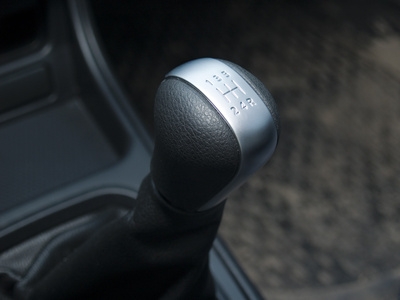
In mechanical terms, there are three types of drive: underdrive (where the transmission output shaft turns slower than the input), direct drive (where the input and output are connected and turning the same speed) and overdrive. Overdrive is the opposite of underdrive; the output shaft turns faster than the input shaft to lower engine RPMs and conserve fuel.
Overdrive in a manual transmission is very simple. Manual transmissions use an input and output shaft that are parallel to each other in the case, and are connected by a series of gears. If the gears on the input shaft are smaller than the matching gears on the output, the output turns slower and you have underdrive. If the input shaft gears are bigger, the output shaft turns faster and you have overdrive.
The science behind automatic overdrive transmissions is a bit more complicated than that used in manual units. Automatic transmissions have a "planetary" gearset at the rear, which contains a central "sun" gear connected to the outer case's "ring gear" by smaller "planet" gears that fit between them. If you lock the outer ring in place and send power through the center sun gear, the smaller planet gears will orbit around the sun gear. Because they're physically smaller than the sun gear, the planetary gears will rotate slower than the sun (giving you an underdrive ratio). If you lock the sun gear into place and send power through the small planet gears, the planet gears will spin much slower than the large outer ring gear (giving you an overdrive top gear).
At anything below the car's top speed, your engine produces far more horsepower than it requires just to maintain speed. For instance, a 3,000 lb. car might only need 40 horsepower to cruise at 55, but the engine might be producing triple that at its 55 mph cruise RPM. Ultimately, the car winds up burning three times the fuel needed to maintain that speed on flat land. Overdrive drops the engine down to a lower RPM, where it makes less power and uses less fuel.
Overdrive allows a much more acceleration-oriented final drive (rear-end) gear ratio, yielding better straight-line performance without affecting fuel economy. The overdrive unit will make the car act as though it has gas-saver gearing instead of drag-race gearing. In some applications the overdrive can also act as a "splitter" to effectively double the number of transmission gear ratios.
Add-on overdrive units (also known as "splitters" in the trucking world) are essentially small, two-speed transmissions that bolt to the back of your existing transmission. A splitter not only gives you an overdrive gear for cruising, it can help keep your engine in its most efficient RPM band by giving you a "gear-between-the-gears." A splitter effectively turns a three speed into a six speed and a four speed into an eight speed. Example: first gear (splitter off), first-and-a-half (splitter on), second gear (shift, splitter off), second-and-a-half (splitter on) and third gear (shift, splitter off).